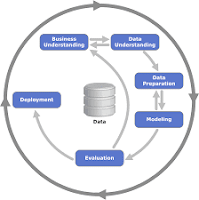One of the biggest challenges facing social media, business websites and other online organizations is harassment and trolling. Users of online platforms are creating a lot of content every moment. As a result, the authorities are struggling to decide which is acceptable and which is not.
Article index:
The way machine learning based content filtering works
Advantages of content filtering technology with the help of machine learning
One of the main reasons for this dilemma is the lack of the technology needed to quickly identify unacceptable content in the conventional way. Moreover, it takes a lot of time to filter the content in the existing system.
Many Internet users are avoiding the use of social networking sites to avoid unwanted and aggressive reactions. Some websites are moderating or disabling comment options to control the issue. But as a result, customers are losing the opportunity to communicate with online community-based business models and promote their own brands. These content filtering challenges can be addressed by further improving machine learning algorithms.
The way machine learning based content filtering works
To understand why machine learning is the key to solving this problem, one must first understand how content filtering works. Basically artificial intelligence (AI) based systems are trained to learn and process data just like the human brain. By mimicking the workings of the human brain, they find reasons to act on information obtained in the form of text, images, and words, and respond accordingly.
AI-based systems are able to scan text as well as images to detect potentially unacceptable content. In this way, practical examples of both acceptable and unacceptable content are presented to them. This process enables the computerized system to distinguish between simple jokes and actual harassing content.
To do this, such a system requires a lot of data. Computerized systems can detect and filter offensive content based on the amount of text used in these data, as well as the amount of text and other factors.
The more data that is provided in such a system, the better the performance is possible. However, in the case of content filtering, it is up to the software developers to decide how to manage trolling or offensive content. And after identifying and identifying unacceptable content, moderators can review it and decide whether to keep it. Again, this system can show a commenter the potential negative aspects of that comment even before it is posted. As a result the commenter can make his comment differently.
However, suspicious content can be automatically blocked on the system before any such action is taken. By doing so, potential victims can avoid negative content, as well as prevent potential harm.
Advantages of content filtering technology with the help of machine learning
Content filtering technology based on machine learning offers some additional advantages over conventional models. Let's know them briefly.
• Ability to withstand the pressure of a lot of content or comments from users on the website
One of the biggest advantages of this system is that it is able to instantly monitor numerous comments, which is not possible for humans. In other words, it creates the ability to moderate quickly at low cost.
• Solve censorship problems
By using automated models a website can benefit from constant user comments or conversations. Because it can effectively manage conversations or conversations between users. Just as censorship does not have a negative impact, so too often there is no opportunity to comment.
• Ability to continuously improve
Machine learning systems, like humans, continue to improve based on the amount of data they receive. Over time the level of accuracy increases and the system becomes more efficient at removing unacceptable text and content.
Predictive vs reactive method
Another great advantage of automated systems is the ability to use predictive or predictive methods instead of reactive methods. Conventional content filtering systems are often responsive. That is, action is taken after damage has been done to the conventional system. But with proper training in machine learning models, potentially bad situations can be predicted before they happen. And in doing so, neural networks collect data from conversations that are spiraling out of control.
Machine learning algorithms can provide an effective and sustainable solution for filtering the content of any content. As a result, effective action can be taken against online trolls on any platform.




